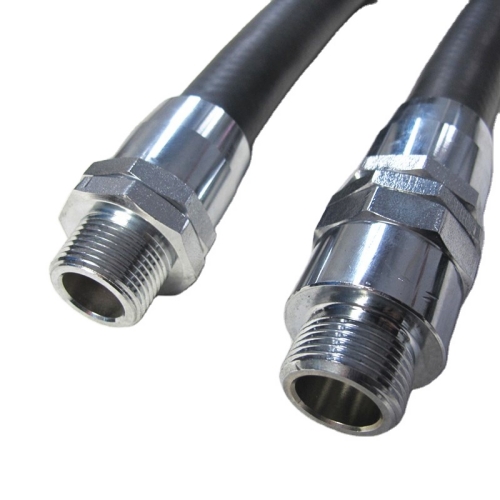335345435
dec . 31, 2024 15:27 Back to list
OEM Hydraulic Hose SAE 100R17 Specifications and Applications Guide
Understanding OEM SAE 100R17 Standards for Hydraulic Hoses
In the world of hydraulic systems, reliable and durable components are essential for efficient operation. One of the critical components in these systems is the hydraulic hose, which is responsible for the transportation of hydraulic fluid from one point to another under high pressure. Among various standards that govern hydraulic hoses, the SAE 100R17 is particularly significant, especially when paired with the OEM (Original Equipment Manufacturer) requirements. This article delves into the specifics of the SAE 100R17 standard, its applications, and the factors to consider when selecting hoses compliant with this standard.
What is SAE 100R17?
SAE 100R17 is a standard established by the Society of Automotive Engineers (SAE) that outlines the specifications for hydraulic rubber hoses designed to be used in high-pressure applications. This standard specifies hoses that can operate under temperatures ranging from -40°F to +212°F (-40°C to +100°C) and have a maximum working pressure of up to 3,500 psi. Hoses rated under this standard are reinforced with high tensile steel wire braids, providing them with the strength needed to withstand the demanding conditions often present in hydraulic systems.
The R17 designation indicates that these hoses are flexible and can handle constant dynamic flexing, making them ideal for applications that require frequent movement or where the hose must navigate tight spaces. The construction and manufacturing processes outlined in the SAE 100R17 standards ensure that these hoses provide excellent pressure resistance and long service life, making them a reliable choice for critical hydraulic applications.
Key Features of SAE 100R17 Hoses
1. High Pressure and Flexibility SAE 100R17 hoses are designed to operate effectively under high pressures while maintaining flexibility, which is crucial for applications that involve bending and twisting of the hose.
2. Durability Constructed with synthetic rubber and reinforced with steel wire, these hoses are built to withstand not only high pressures but also wear and abrasion, contributing to their longevity.
3. Temperature Resistance The ability to function effectively at a broad temperature range makes these hoses suitable for various environments, whether it's in the heat of machinery operation or in colder, unheated spaces.
4. Compatibility with Fluids SAE 100R17 hoses are designed to handle various types of hydraulic fluids, including petroleum-based fluids, making them versatile for different industrial applications.
Applications of SAE 100R17 Hoses
SAE 100R17 hoses are widely used in various industries where hydraulic systems are prevalent
. Common applications includeoem sae100r17

- Construction Machinery Backhoes, bulldozers, and excavators often utilize SAE 100R17 hoses to operate hydraulic functions such as lifting and digging.
- Agriculture Equipment Tractors and other farm machinery commonly use these hoses to manage hydraulic systems that control implements and attachments.
- Industrial Machinery Manufacturing plants often rely on hydraulic presses and other equipment that incorporate SAE 100R17 hoses for precise fluid control.
- Automotive Applications Many vehicles, especially those designed for heavy-duty purposes, employ these hoses in their hydraulic systems, contributing to functions such as steering and braking.
Choosing the Right Hydraulic Hose
When selecting a hydraulic hose, especially one that complies with the SAE 100R17 standard, it is crucial to consider several factors
1. Application Requirements Assess the specific needs of your hydraulic system, including pressure, temperature, and fluid compatibility.
2. OEM Specifications If you are replacing a hose on equipment, ensure that the new hose meets the OEM specifications for quality and performance to maintain warranty coverage and operational safety.
3. Environment Consider the conditions in which the hose will operate, such as exposure to chemicals, UV light, or extreme temperatures, which can affect the hose's performance and longevity.
4. Flexibility and Bend Radius Analyze the routing of the hose in your application to ensure it can bend properly without kinking or compromise in operation.
In conclusion, OEM SAE 100R17 hydraulic hoses represent a standard of durability, reliability, and adaptability in high-pressure applications across various industries. Understanding the specifications and applications of these hoses will empower users to make informed decisions to ensure the efficiency and safety of their hydraulic systems. Investing in quality hoses not only enhances performance but also extends the life expectancy of hydraulic equipment, ultimately leading to reduced downtime and operational costs.
-
SAE 100 R3 / EN854 R3 Hydraulic Hose | Medium Pressure & Flexible
NewsAug.11,2025
-
EN856 4SP Hydraulic Hose: High-Pressure & Durable Solutions
NewsAug.11,2025
-
Premium Soft Rubber Tubing: Flexible & Durable Hose Solutions
NewsAug.10,2025
-
Premium Distribution PTFE Hose | Flexible & Durable Solutions
NewsAug.09,2025
-
Premium 38mm Hydraulic Hose Factories | Direct & Reliable
NewsAug.08,2025
-
Premium Wire Braided Hydraulic Hose - Steel Reinforced for Durability
NewsAug.07,2025



